
By Kelley Elliott - Expedition Coordinator
August 21, 2015
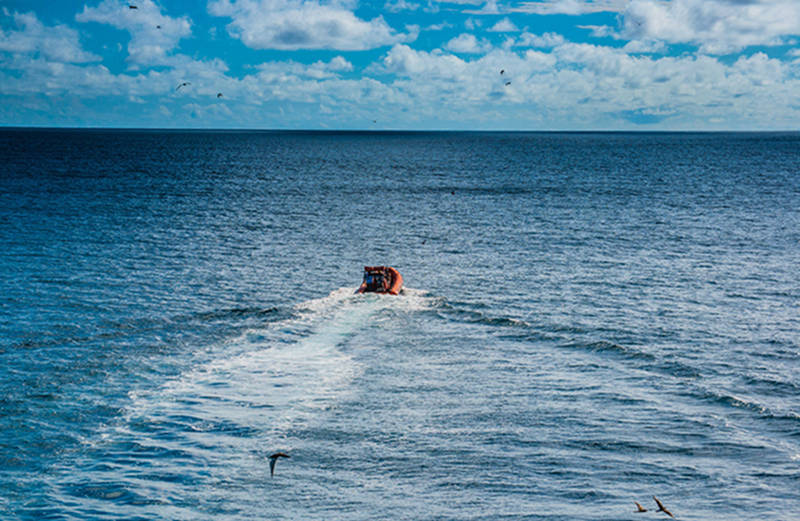
Okeanos Explorer’s fast rescue boat is deployed from the ship and en route to Tern Island to pick up four Monk Seal researchers. Image courtesy of the NOAA Office of Ocean Exploration and Research, 2015 Hohonu Moana. Download larger version (jpg, 8.0 MB).
August 20 started off like any other day on a telepresence-enabled remotely operated vehile (ROV) cruise on NOAA Ship Okeanos Explorer. At 0700, personnel started to trickle into the mess deck to make their morning coffee and have breakfast. The ROV team, deck department, and officers then made their way to the aft deck and aft conning station for ROV deployment.
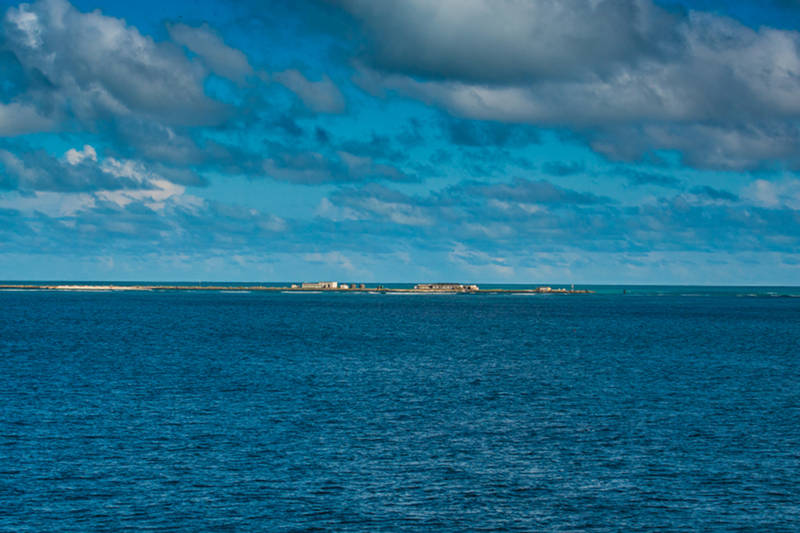
Tern Island, part of French Frigate Shoals, was formed into a runway to serve as a refueling stop for planes en route to Midway during World War II. Some of the buildings, runway, and the original seawall still remain. Image courtesy of the NOAA Office of Ocean Exploration and Research, 2015 Hohonu Moana. Download larger version (jpg, 6.5 MB).
The vehicles were in the water shortly before 0830 and on their way to the seafloor. At 0830, the scientists headed to the control room for the dive debriefing with the shore-side science team, while the team leads on the ship headed to the bridge for the morning safety briefing. The ROV dive was conducted in a channel between WestpacBank and Nihoa Island, which creates a constriction point for current flow. The objective of the dive was to survey a completely unexplored area for corals and sponges, gathering information on whether high density communities can be found in areas where the surrounding topography accelerates current flow. While the first half of the dive went well and different types of animals were imaged compared to other dive sites, about halfway into the dive, the Deep Discoverer encountered very strong currents that impeded forward movement and as a result, the dive was aborted and the vehicles brought to the surface. Once they were secured on deck, mapping operations began as the ship commenced transit further east to Middle Bank for the last planned dive of this cruise leg.
While the rest of the team went about wrapping up their afternoon and preparing for operations the next day, the Commanding Officer received a call from higher levels in the command: the ship needed to divert course from her current transit to Middle Bank and return to Pearl Harbor the following day, and instead transit west to Tern Island, French Frigate Shoals, to rescue four scientists conducting research for NOAA’s Hawaiian Monk Seal Research Program.
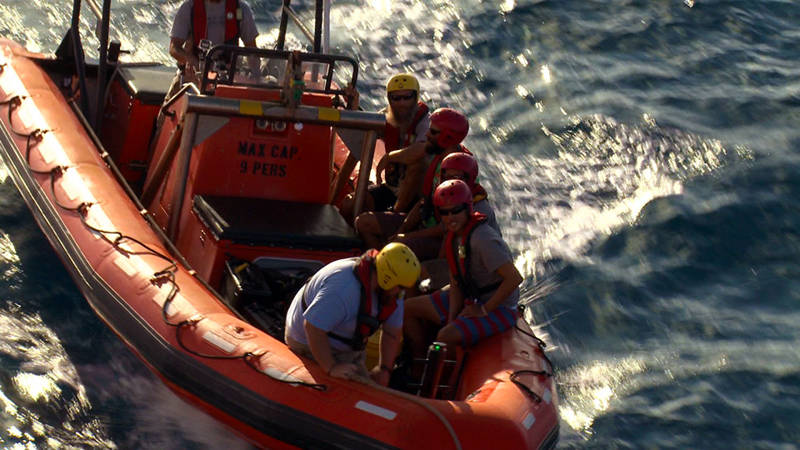
Okeanos Explorer’s Fast Rescue Boat returns to the ship with the four Monk Seal researchers safely onboard. Image courtesy of the NOAA Office of Ocean Exploration and Research, 2015 Hohonu Moana. Download larger version (jpg, 1.2 MB).
These researchers are located on one of several camps in the Northwest Hawaiian Islands in the vicinity of the predicted route of Tropical Storm Kilo, which was forecasted to turn into a hurricane in the coming days. Tropical Storm Loke continues to develop to the west, coming in behind Kilo. These scientists were ordered to evacuate, and as the closest ship despite being a full day’s transit away, NOAA Ship Okeanos Explorer was called to service.
The team onboard was quickly notified, and messages went out to the shore-side science and operations team letting everyone know that the next day’s ROV dive was cancelled, and NOAA Ship Okeanos Explorer’s arrival at Pearl Harbor would be delayed one to two days. The ship had already turned west and was en route to Tern Island.
By 5:00 pm the next day, the ship had arrived and the team onboard quickly and safely deployed the Fast Rescue Boat to shore, and retrieved the four scientists and some of their gear. Less than two hours later, everyone was safely on board and Okeanos Explorer was heading east to Pearl Harbor. We have another one to two days of transit and expect to pull into port in Pearl Harbor late Sunday night or Monday morning, bringing this cruise to a close.
Although we lost one dive as a result of the rescue operation, we will return to port with four additional scientists and the knowledge that they are safely out of the way of Tropical Storms Kilo and Loke, and in a location where they can find shelter if and when these storms further develop and hit the Hawaiian Islands.
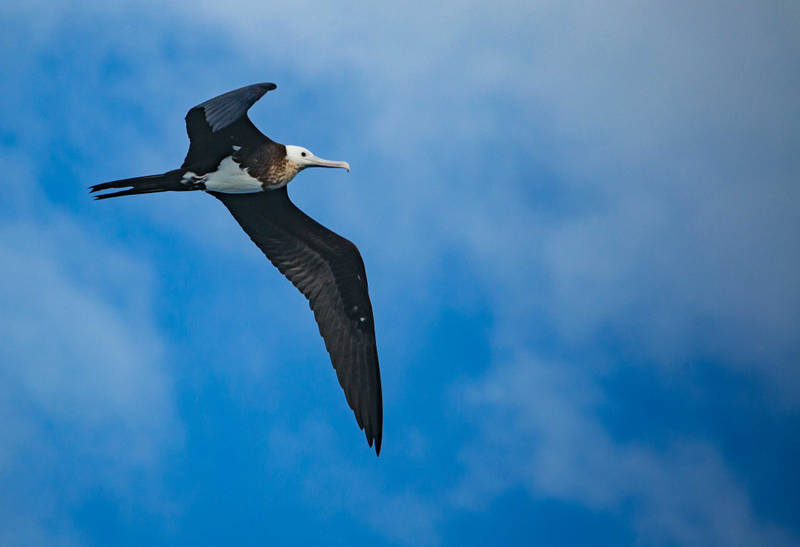
When NOAA Ship Okeanos Explorer arrived offshore of Tern Island at French Frigate Shoals, dozens of sea birds flew out to investigate the ship. These included Great Frigate birds, or 'Iwa,' which are often seen in the Northwestern Hawaiian Islands. Iwa (which means thief in Hawaiian) are infamous for stealing the food of other seabirds, but catch most of their food on their own. Image courtesy of the NOAA Office of Ocean Exploration and Research, 2015 Hohonu Moana Download larger version (jpg, 3.2 MB).
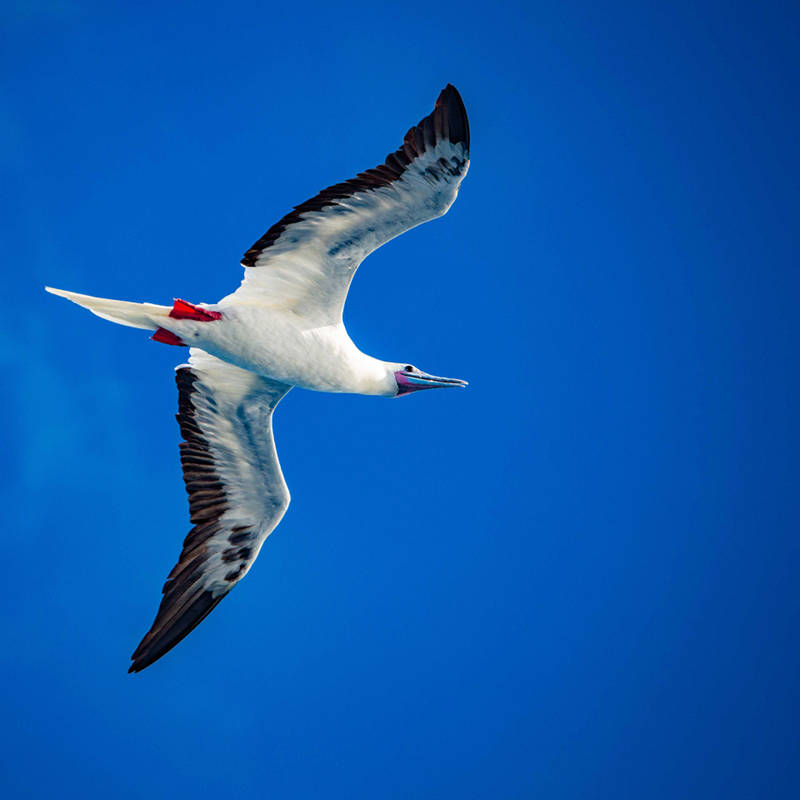
NOAA Ship Okeanos Explorer was also greeted by red-footed boobies, which are the smallest booby found in Hawaii with a wingspan of around one meter (40 inches). Image courtesy of the NOAA Office of Ocean Exploration and Research, 2015 Hohonu Moana. Download larger version (jpg, 4.1 MB).